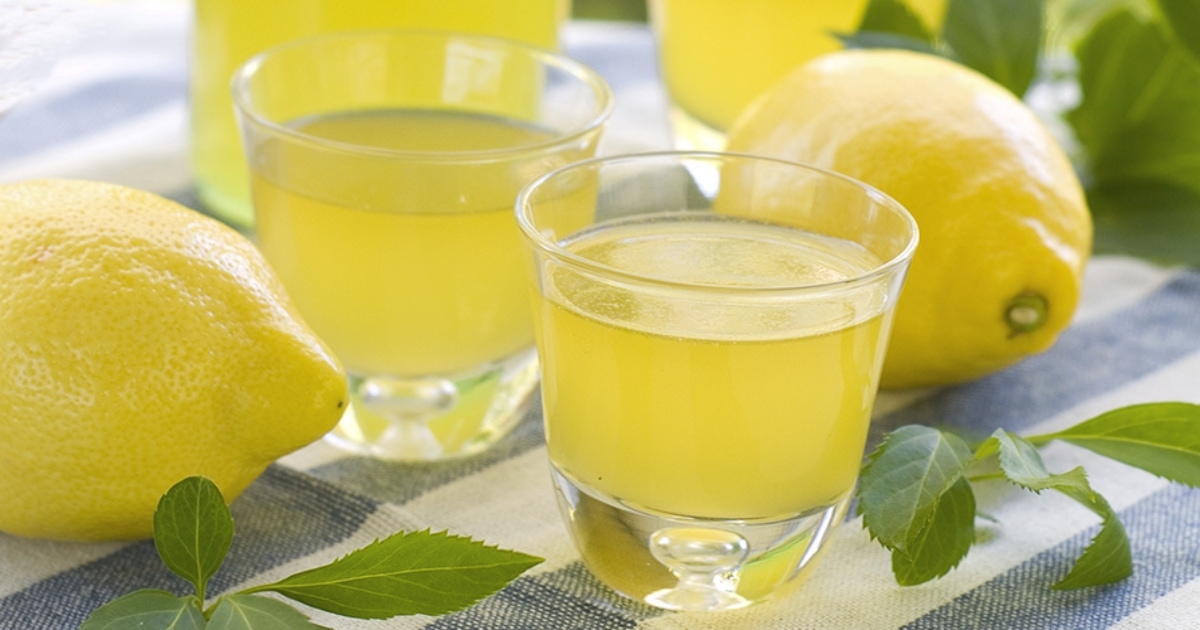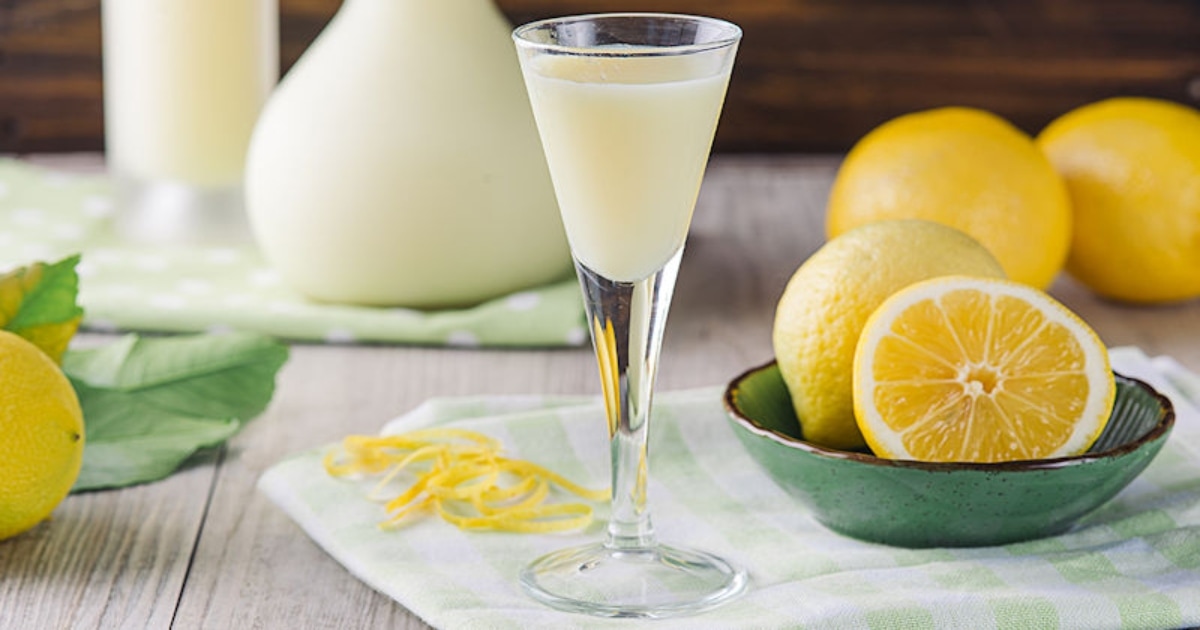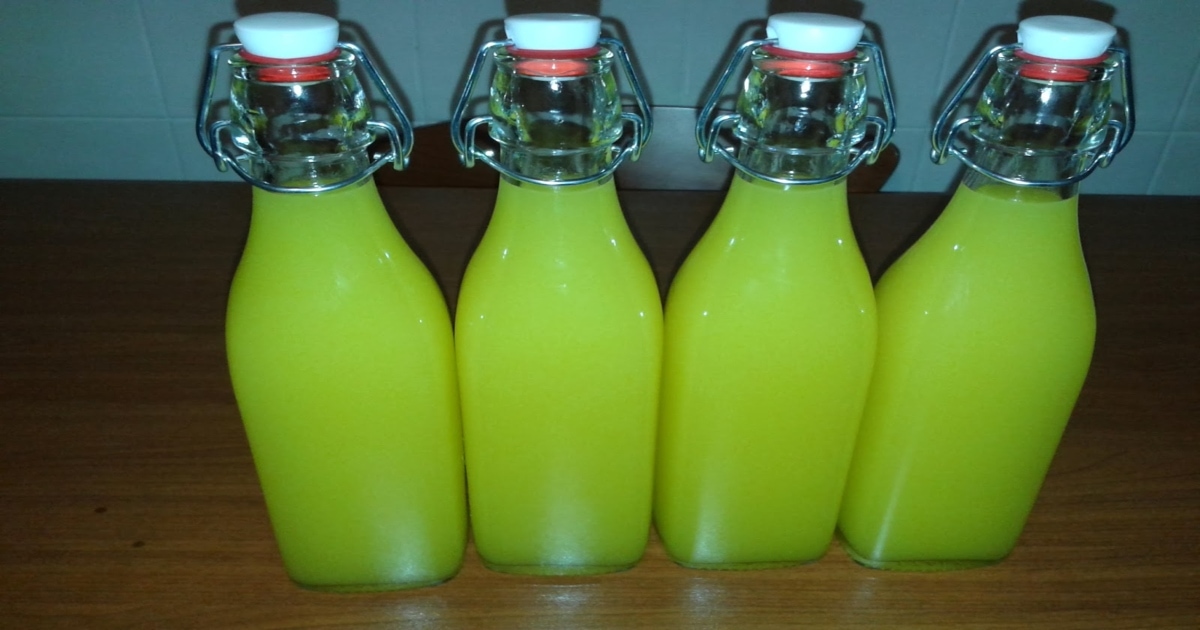Quick Navigation
How to Make Limoncello – Easy Homemade Recipe
Good limoncello cannot be bought. It is done.
It is the Mediterranean liqueur par excellence. Who does not like a nice glass of iced limoncello after a nice pizza or fried fish? Fresh, thirst-quenching, alcoholic, but still a great digestive. It can satisfy the palate and the belly even of those who do not appreciate the usual bitters. But what is the best limoncello? Ultimately, the best limoncello is a homemade limoncello.
In fact, this liqueur has always been produced in Sorrento. The surrounding towns make splendid limoncello, too, and this is distinguished by their unmistakable flavor. To point out, the best lemons come from Massa Lubrense and Amalfi. Comparatively, the former has an elliptical shape while the second, on the other hand, is tapered. Both lemons provide equally abundant juice with high acidity.
This lemon flavored liqueur is certainly easy to be created at home.
Limoncello preparation is not complicated, although perhaps the procedure is a bit long. It is also important to realize to choose the best ingredients. Its preparation requires patience and attention but you will see that it is all worth it!
How to Make Limoncello
Ingredients
- 8 Organic lemons
- 1 L 90% alcohol
- 1 L Water
- 500 g Sugar
Instructions
-
The first step starts with gathering organic lemons directly from farms or from the Amalfi Coast, which could be Sicily, Gargano, Lake Garda or Calabria.

-
Wash the fruit in warm water and gently cleaning it with a sponge.

-
Now comes the difficult part. Using a peeler or a kitchen knife, remove the flavedo or zest. In Italian, it is called scorzetta. Make sure to avoid the white part or the albedo which is bitter. Slice it into strips no larger than three centimeters. Collect the peel in a glass container with an airtight cap with a capacity of at least 2 liters.

-
Alcohol is poured in a container, adding the rind gained from the lemons. Put the container in a dark place where the zest will remain soaked for 2 weeks to allow the maceration of the peel. It will be stirred gently once a day. You will notice that the aroma and the color of the lemon have slowly incorporated in the instilled liquid.

-
After 2 weeks, prepare the other ingredients. Put the water in a pan and add the sugar. Over medium heat, stir well and let boil. Take the pan out from the fire and let the mixture cool. Do not cheat, do not put the pot in the fridge!

-
Now add the syrup to the alcoholic compound. You will have to store the precious liqueur in the same dark place as before for another two weeks.

-
After a month, the liqueur is filtered and the peel is discarded. You do not need to use additives or coloring agents; the quality of the lemons will give out its unique taste and aroma.

-
Pour the filtered liqueur into clean, glass bottles and refrigerate.


Serving
Limoncello’s sharp flavor is sweet, not to mention very refreshing. Moreover, limoncello is a superb aperitif or digestive, especially when served cold. The beverage is usually served after meals but is also perfect for every occasion, too. Limoncello liqueur is traditionally prepared in a chilled cordial glass and neat, or no ice. As a matter of fact, limoncello is used as an ingredient for a variety of cocktail and simple tall drinks, as well as martinis.
If you want to sip it in the late afternoon, try adding a lot of tonic water instead. In this way, you will have created a wonderful thirst-quenching drink even if a little alcoholic.
If instead, you want to enjoy it after dinner, the secret is to add Limoncello to a nice glass of champagne or Prosecco.
And finally, and the most unusual serving. Have you ever tried to pour the Limoncello di Sorrento directly on the fruit salad or a huge ice-cream cup? This is definitely worth a try.

Variations
Did you know that limoncello has different alternatives? These variations are created from alcohol, nuts, and fruits. To enumerate first is the Pistachiocello. This is one of the popular variations made from pistachio nuts. Second is Meloncello produced from cantaloupe, and finally, Fragoncello concocted from strawberry. Other flavors also include honey, grass, and pepper. Milk is added instead of sugar for another creamier variation. It is called Crema di Limoncello. This equally refreshing drink has less alcohol content compared to the version without milk.
Tips
- Use ceramic knives to cut the lemon peel. This will, therefore, help preserve all the active ingredients and benefits of essential oils contained in the peel.
- Always keep jars and bottles in a cool and dark place. During the preservation phase, active ingredients are sensitive to light and heat. Exposure to these elements would consequently compromise the taste of the limoncello.
- It must be remembered to use only pure quality alcohol to prevent it from freezing in the freezer. It is also especially important to use lemons preferably from Sorrento. These lemons are not treated unlike the lemons with thick and wrinkled skin.
- Fancy a milky limoncello? Add limoncello cream to the mixture. First, add the lemon peel to pure alcohol and substitute milk and cream instead of sugar. The result is a fresh and creamy liqueur ideal as after meal beverage.
- The quality of lemons used and the amount of sugar added makes all the difference. Add more sugar to the mixture if you prefer the sweeter version.

Storage
The cool refreshment can be stored for a long time in the fridge or in the freezer as soon as it is ready. Alcohol and sugar will definitely prevent the beverage from freezing. Check out our guide on how to store limoncello for comprehensive best practices.








